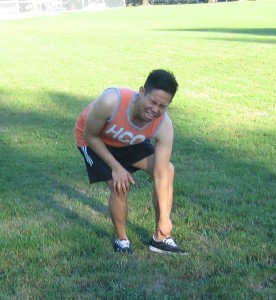Overview
The heel of the foot is a padded area of fatty tissue around the heel bone that is able to hold its overall shape despite its overall movement and body shape. It helps to protect the overall structure of the foot itself; however, heel pain is something that is a very common complaint among a lot of people.

Groups at a Common Risk of Heel Pain
While anyone can suffer from heel pain, there are certain groups of individuals that are more of a risk than others, which include the following:
*Men and women who are middle-aged
*Individuals who are physically active
*Overweight/obese people
*Those who are on their feet for a long period of time
*Children between the ages of 8 and 13
*Pregnant women
Causes
Some of the most common causes of heel pain include the following:
*Abnormal walking style
*Obesity
*Shoes that don’t fit
*Jumping, running, or standing on hard surfaces
*Injury
*Bursitis
*Neuroma
*Other disorders
Complications
Other complications of heel pain can include the following:
*Plantar fasciitis
*Heel spur
Plantar Fasciitis
The plantar fascia is a band of tissue that runs from the sole of the heel all the way to the ball of the foot, and is designed to keep all of the joints and bones in position. Heel pain and inflammation can come about whenever overstretching or bruising this particular ligament occurs. The most common cause of this is flat feet due to the ligament overstretching because the foot spreads out and the arch flattens. In a lot of cases, plantar fasciitis can be associated with heel spur. This involves the plantar fascia tearing and bleeding at the heel, with the injuries calcifying and forming a bony growth as time goes on.
Heel Spur
Extra strain can be placed on the plantar fascia due to an abnormal walking style. Additionally, you can develop chronic inflammation, which can also lead to a bony growth or a spur. The spur will only be able to be spotted on an x-ray; however, its overall presence can be flagged by a tender patch on the sole.
Treatment
Depending on what the actual cause is, some of the most basic treatment options include the following:
*Rest from any activities that may cause stress on the heel
*Ice packs
*Regular massaging of the feet
*Professional strapping
*Wearing a splint at night
*Taking on flexibility exercises
*Ultrasound therapy
*Topical and/or oral anti-inflammatory medication
*Checking both your walking style and body posture in order to correct any imbalances and abnormalities
*Shoe inserts
*Surgical procedures to treat any conditions that may be present
